the place where Paleontology and Paleoanthropology meets Philately
Sweden
Fossils and reconstruction of dinosaurs and other prehistoric animals,
contributors to Paleontology science, Carl Linne on stamps and postmarks of Sweden
| << previous country | back to index | next country >> |
Contents:
- Country overview
- Philately of Sweden
- Official stamps of Sweden related to Paleontology
- Other stamps of Sweden to consider
- Commemorative postmarks of Sweden related to Paleontology
- References
- Acknowledgements
Sweden, officially the Kingdom of Sweden, is a Scandinavian country in Northern Europe. It borders Norway to the west and Finland to the east, and is connected to Denmark in the southwest by a bridge-tunnel across the Öresund.
At 450,295 square kilometres, Sweden is the third-largest country in the European Union by area, with a total population of 10.0 million.
Sweden consequently has a low population density of 22 inhabitants per square kilometre, with the highest concentration in the southern half of the country.
Approximately 85% of the population lives in urban areas. [R1]
Posten, the Swedish mail service, was established in 1636 by Axel Oxenstierna, and by the 18th century it had been extended throughout the country.
The same century also saw the introduction of a practice unique to Sweden, that of attaching a feather to the wax seal of a letter to indicate that it needed to be delivered more quickly Sweden issued its first postage stamps on 1 July 1855, a set of five values denominated in skilling banco.
These stamps depicting the coat of arms, were inscribed "SVERIGE", as have been all subsequent Swedish stamps, and were perforated. [R2]
Official stamps of Sweden related to Paleontology: fossil and reconstruction of dinosaurs and other prehistoric animals
| 03.10.1992 "Prehistoric animals" | 27.01.2011 "Fossils" | 14.01.2016 "Animals and plants from the Palace of Nature" |
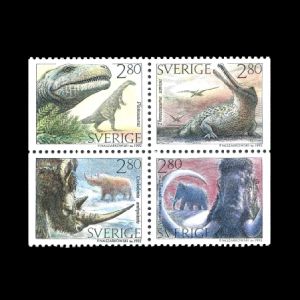 |
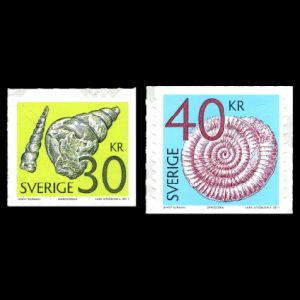 |
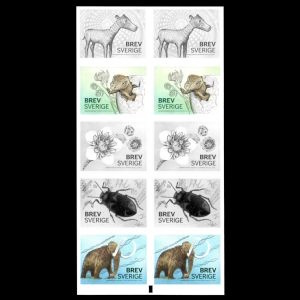 |
Other stamps of Sweden to consider: Carl Linnaeus
| 20.06.1939 "200th anniversary of Science Academy of Sweden " [A1] | 25.10.1963 "Historical buildings: house of Carl Linnaeus" [A1] | 22.09.1973 "Explorers" [A2] |
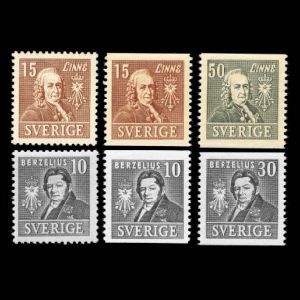 |
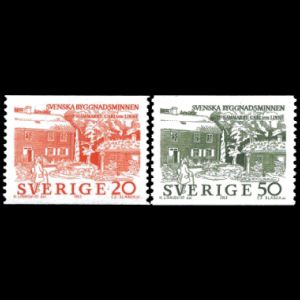 |
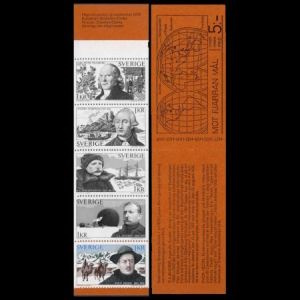 |
| 23.05.1978 "200 years since death of Carl Linnaeus" [A1] | 25.01.2007 "300th anniversary of Carl Linne" [A1] | |
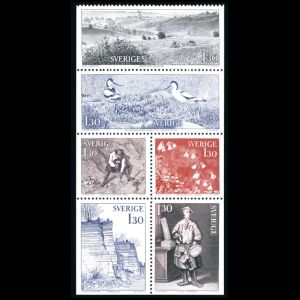
| 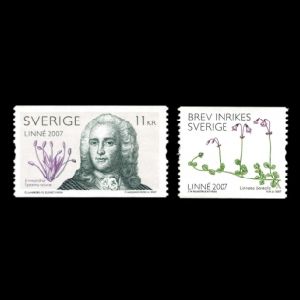 |
|
Notes:
[A1] Carl Linne or Carl Linnaeus (1707 - 1778), was a Swedish botanist, physician, and zoologist, who laid the foundations for the modern scheme of binomial nomenclature used in all biology-related sciences, including paleontology. He is known as the father of modern taxonomy, and is also considered one of the fathers of modern ecology. [R3]
[A2] Sven Hedin (19 February 1865 – 26 November 1952) was Swedish explorer who led through Central Asia a series of expeditions that resulted in important archaeological, geographical and paleontological findings.
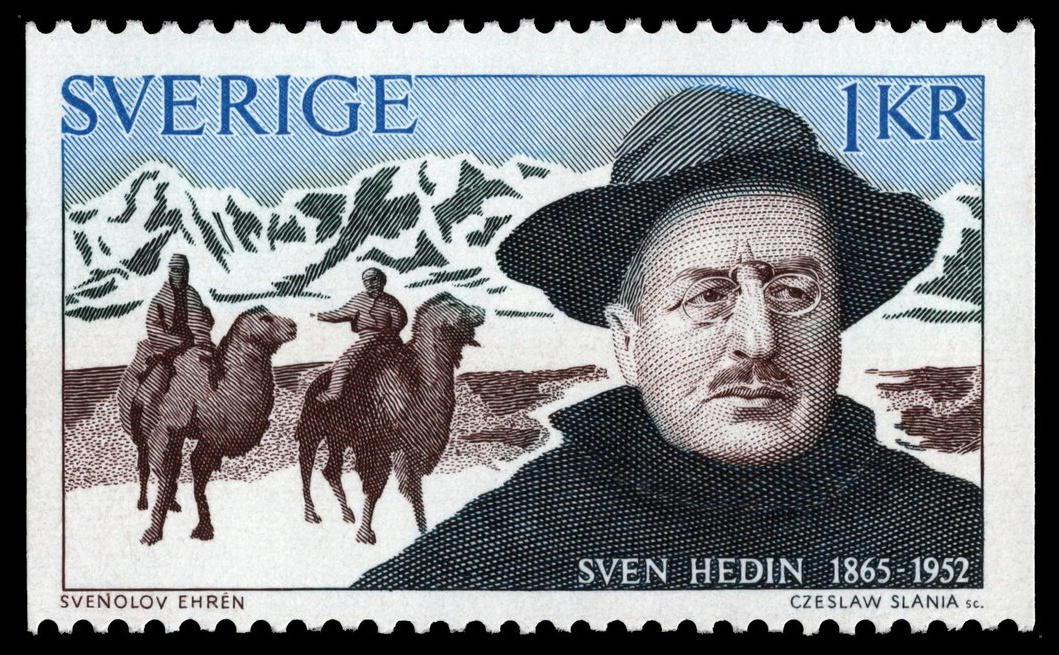 |
| Sven Hedin on stamp of Sweden 1973, MiNr.: 814, Scott: 1009 |
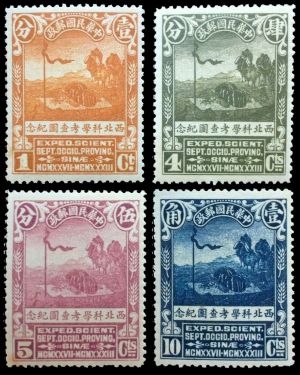 |
| Stamps of China, issued in honor of the Sino-Swedish Expedition in 1932, MiNr.: 246-249, Scott: 307-310 |
From 1927 to 1933 Sven Hedin was the lead of the Northwest Scientific Expedition, also known as "the Sino-Swedish Expedition". It included some 50 Swedish, German, and Chinese scientists and researchers. The expedition was financed not only by Sweden but also from international sources. They made numerous important scientific discoveries, including geological and paleontological discoveries in Inner Mongolia and Sinkiang. These discoveries included also remains of some dinosaurs, though many were only fragmentary remains.
For example, in 1930 Dr. Anders Birger Bohlin (1898–1990) a Swedish palaeontologist, who was one
of the members of the Swedish-Chinese expeditions of Sven Hedin,
had uncovered the fossils at Ehr-chia-wu-t'ung, in the west of Gansu, in a layer of
the Minhe Formation dating from the Campanian.
They consist of an about 5-centimetre long piece of a right lower jaw with four tooth
positions and a loose tooth.
Bohlin named it in 1953 as Peishansaurus.
Peishansaurus was a genus of ornithischian dinosaur that lived during the
Late Cretaceous period, roughly 85-72 million years ago.
Bohlin placed it in the Ankylosauridae, assuming the fossil represented a juvenile ankylosaurid,
but it could also be a pachycephalosaur.
The following specimens of prehistoric animals were named in honour of Sven Hedin: Tsaidamotherium hedini - a fossil hoofed mammal, Lystrosaurus hedini - a fossil Therapsid (a "mammal-like reptile"). [R3]
Commemorative postmarks of Sweden related to Paleontology: fossils and reconstructions of prehistoric animals and plants
| 01.05.1981 "Fredriksdal Museum in Helsingborg: Geology on stamps" [Sp] [PM1] | 09.03.1991 "Falköping: Thematic Day" [Sp] | 03.10.1992 "Philatelic Day in Osby" [Sp] [PM2] |
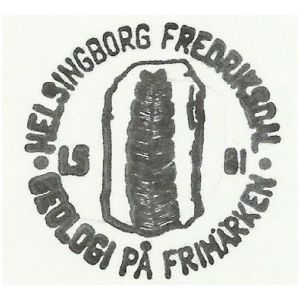 |
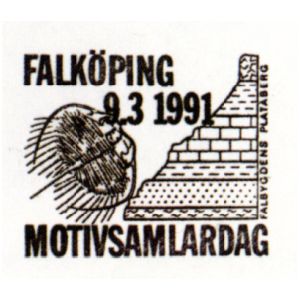 |
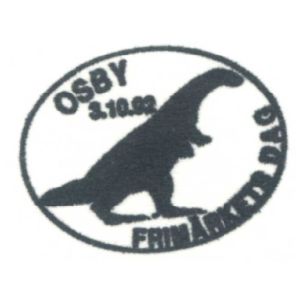 |
| 03.10.1992 "Prehistoric animals" [FDC] | 27.01.2011 "Fossils" [FDC] | |
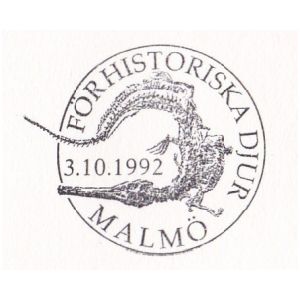 |
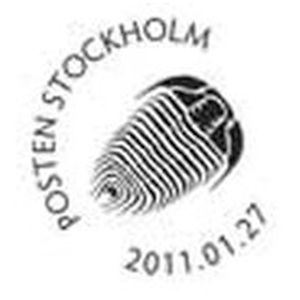 |
|
Notes:
[PM1] Fossil of Anomozamites minor, farnwedel plant from Triassic period.
[PM2] The postmark of Orby town, issued on the same day as prehistoric animal stamps, but not used on official FDCs.
Official FDC cancelled by another postmark in Malmo.
References:
- [R1] Sweden: Wikipedia,
- [R2] Postal History and Philately of Sweden: Wikipedia.
- [R3] Carl Linnei: Wikipedia.
- [R4] Sven Hedin:
Wikipedia.
Linns Stamp News,
Sven Hedin Foundation,
encyclopedia,
- Wikipedia
- Sven Hedin Foundation
Sino-Expedition
Acknowledgements:
Many thanks to Dr. Peter Voice from Department of Geological and Environmental Sciences, Western Michigan University, for the draft page review and his very valuable comments.
| << previous country | back to index | next country >> |